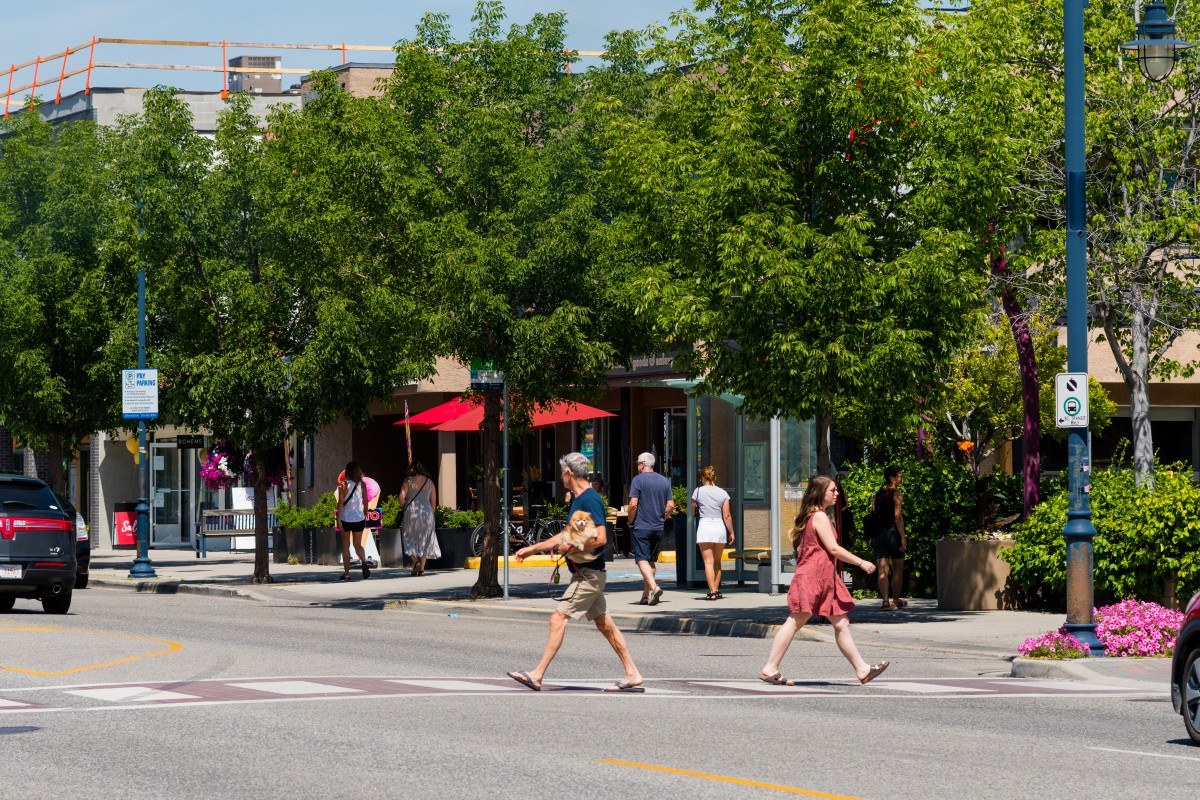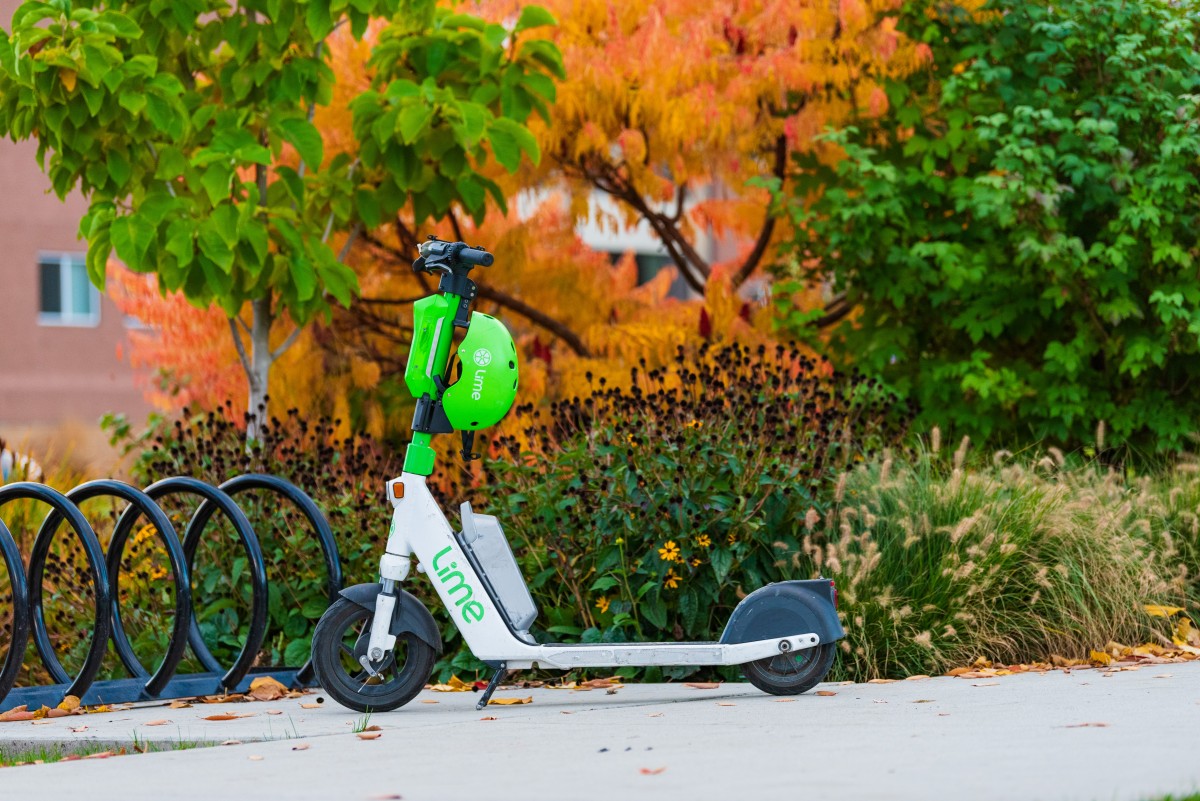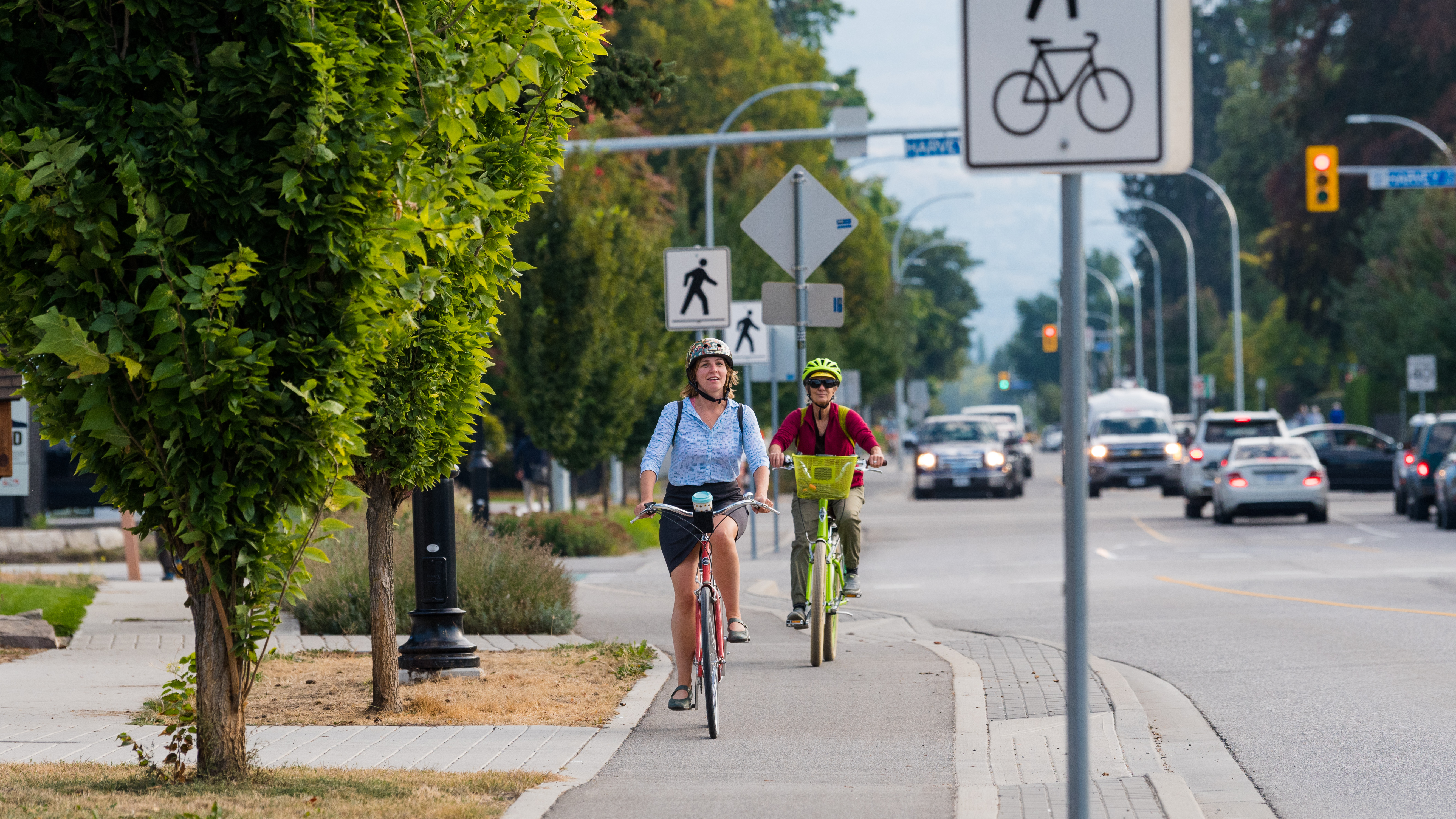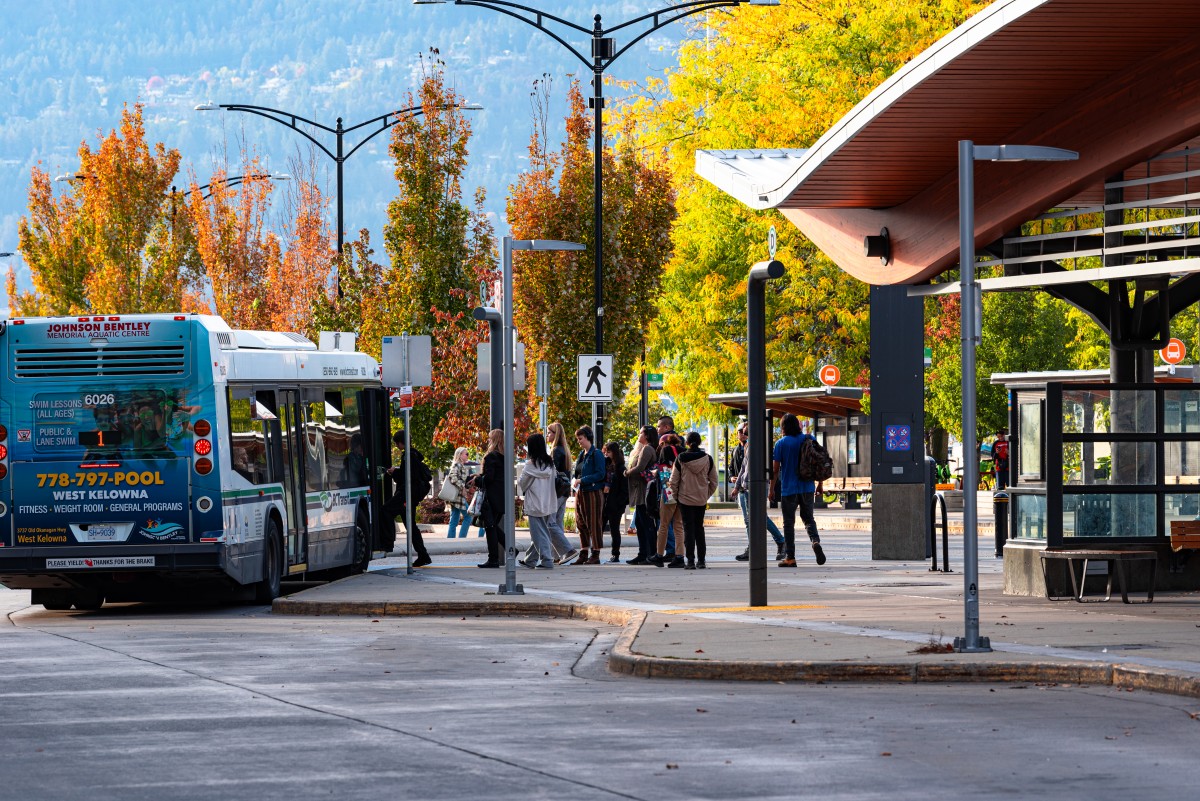Growing without gridlock with new transportation options
Yes, we drive a lot in Kelowna. After all, our town grew up in the golden age of the automobile. But now that we’re a mid-size city with a rapidly growing population, is it time to learn how to use and enjoy new ways of getting around?
“Kelowna’s in a tremendous period of growth, but with more than 200k people predicted to be living here by 2040, we want to be as proactive and support this growth while minimizing increases in traffic congestion and emissions,” said Mariah VanZerr, Strategic Transportation Planning Manager for the City of Kelowna.
As project manager for the 2040 Transportation Master Plan (TMP), VanZerr’s focused on keeping our growing population moving efficiently, now and into the future.
“Transportation affects our quality of life in many different ways and as our city grows, we know some people will want to continue driving, but we also know that many residents want to walk, cycle or use transit to get around, or drive less for their everyday needs, and through the vision of the TMP, we’re working to make it easier for everyone,” said VanZerr.
Keeping Kelowna moving, now and beyond 2040
The TMP was developed through an intensive five-year technical and community engagement process that helped shape its content and recommendations. It includes over 100 recommended actions and several achievable targets aimed at reducing traffic congestion, including doubling transit ridership by 2040, quadrupling the number of trips made by bicycle and reducing the average distance driven per person by 20 per cent.
But the question remains, why not just build more roads and widen existing ones?
“Traditionally, this is how cities would attempt to build their way out of congestion, but it’s not only ineffective, it’s very costly,” said VanZerr. “By offering people more choices to get around, such as expanded transit and more cycling and walking paths, we can keep taxes lower, reduce travel times and lower carbon emissions, while still helping to keep our economy strong by ensuring goods can continue to be moved efficiently and reliably,” she added.
How the TMP aligns with other city initiatives

The TMP was developed in tandem with Kelowna’s 2040 Official Community Plan (OCP) and the 20-Year Servicing Plan which looks at future infrastructure needs. The OCP identifies how and where the city should grow in terms of housing, parks, transportation, the economy and the natural and social environment over the next 16 years. Based on the OCP growth strategy, VanZerr's team evaluated potential transportation projects to help keep people moving. Special emphasis was placed on areas of the City where the growth is happening, primarily the Core Area and Urban Centres.
Neighbourhoods made for walking, biking, rolling and transit
Kelowna now has over 700 kilometres of active transportation corridors, bike lanes and sidewalks. The bike map looks a lot different than when it was first published seven years ago, as the City has been working hard to build out the network and is now focused on filling the gaps to connect communities.
With a great climate and relatively flat terrain in the Core Area, cycling is popular for both commuting and recreation and there’s a strong potential to increase the number of shorter trips.
“We know people are less likely to walk or cycle for trips of more than five kilometres, that’s why we’ve focused on building the active transportation network in the Core Area and Urban Centres. And for those longer trips, we’re also linking transit routes to many important destinations,” said VanZerr.
To get more people on bikes, cycling is promoted through initiatives like GoByBike Week and the City will also be offering bicycle skills training to help people who are interested in cycling more but also as much concerned about safety.
“Every trip via bicycle, walking or transit helps us all as it reduces the number of cars on the road --this means, less traffic for everyone and lower emissions,” said VanZerr.
Active transportation 365 days a year?
With Kelowna’s chilly winters, VanZerr acknowledges the number of cyclists drops significantly during the cold winter months. But she adds that summer is when Kelowna’s traffic is the most congested when visitors come into town.
“We think of biking in the summer as a relief valve when traffic is at its highest. Imagine the traffic congestion if those summer cyclists were driving instead,” said VanZerr.
But VanZerr says there are winter bicycle commuters even when there’s snow and the temperature dips. And in 2022, the City invested in new smaller snow-clearing equipment for the active transportation network, opening the opportunity for more people to walk, cycle or wheel in the winter.
New transportation technologies provide more options
For people who want to cycle but find distances too long or their route too steep, e-scooters and e-bikes are opening options to a wider range of people. Cyclists can travel further and up steeper grades with assistance from an e-bike or e-scooter. On-demand transit is also on the horizon.

“Imagine being able to call a bus on your phone,” said VanZerr. “BC Transit is working on piloting on-demand transit in Kelowna, and I think it has good potential to bring transit to some of our outlying areas that don’t have transit but would like it,” she added. “There are also ride-hailing options in Kelowna now, so if you miss your bus, you aren't stranded.
The future of commuting in Kelowna
VanZerr stresses that if we did nothing to improve and expand transportation options in Kelowna as our population grows, vehicle kilometres travelled (distance driven) would increase by 25 per cent due to population growth alone, meaning more congestion and carbon emissions.
But the good news is the City is being proactive by increasing density in the Core Area and Urban Centres which will shorten trip distances and make biking and walking more convenient. It will also make high-frequency transit such as rapid buses (now being piloted in the Lower Mainland) more feasible to provide better transit connections to local and regional destinations along the highway corridor. Streetcars or trams are other options being looked at as well.
VanZerr and her team are excited about seeing the recommendations from the TMP and OCP come to fruition over the next 16 plus years. It’s a feeling shared by many as we all imagine how we’ll get around Kelowna in 2040. Whether travelling by foot, wheels, bike, transit or car, there will be no shortage of options in our growing, diverse and inclusive city.
Transportation trivia:
- We drive 2.1 million kilometres every weekday* —that’s equivalent to three times to the Moon and back!
- Transportation currently produces 55 percent** of Kelowna’s greenhouse gas (GHG) emissions, the biggest component of our GHG emissions footprint.
- We use an estimated 340,000 parking spaces*** to store our vehicles. This is comparable to the living space of all homes in Kelowna.
- The cost to widen a major road in the Core Area was estimated to be $26 million per kilometre in 2018***. Due to inflation, this cost would be much higher in 2023.
* Source: 2018 central Okanagan Household Trip Diary |** Kelowna's Community Climate Action Plan| *** Facts in Focus - Congestion Paradox





